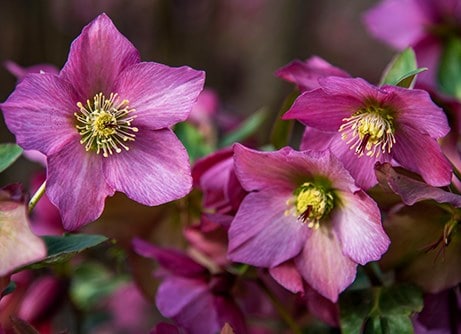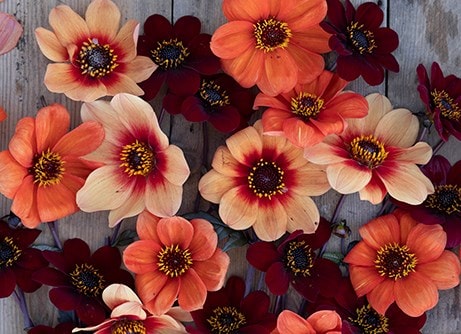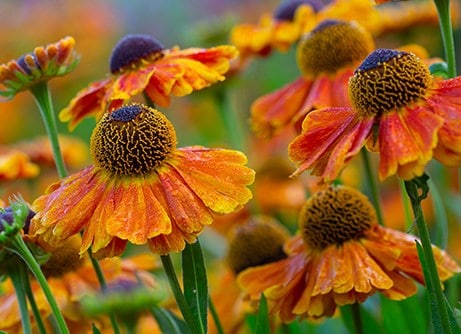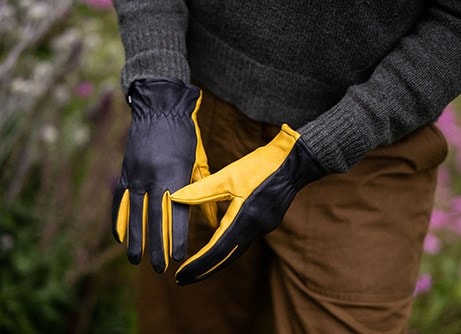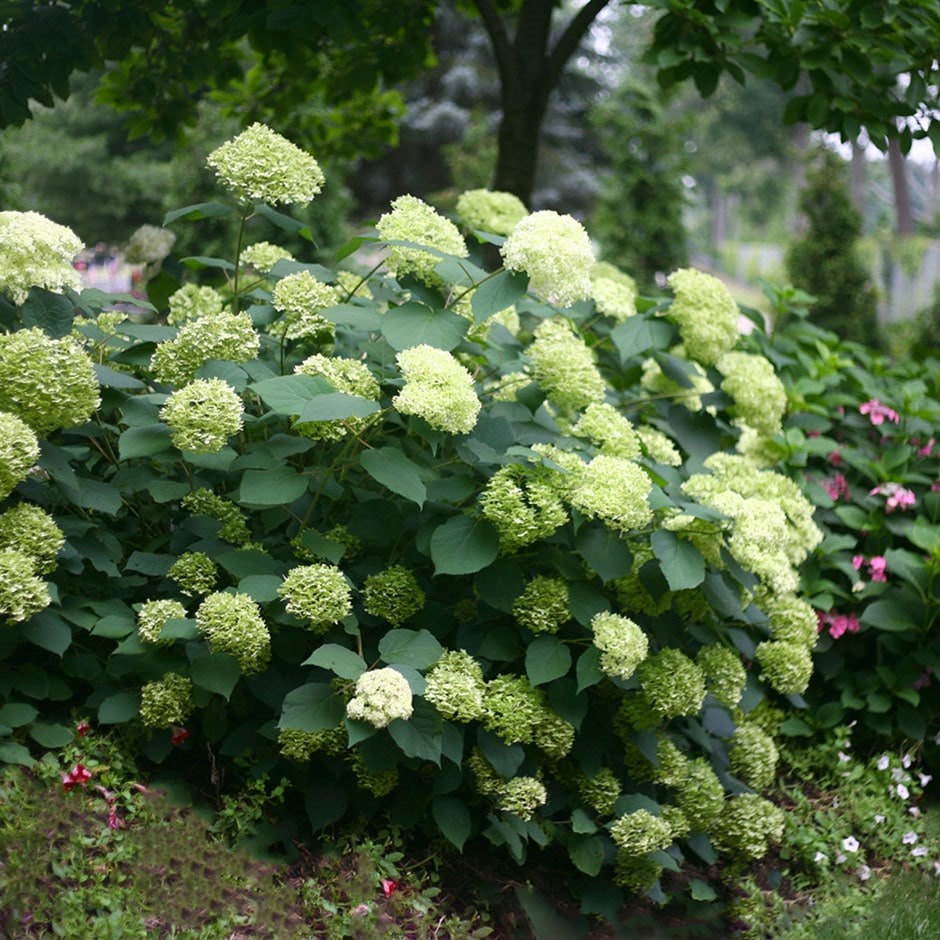
The large domed flowerheads of Hydrangea arborescens Lime Rickey emerge a fresh lime green in midsummer but gradually fade to white as the season progresses. Their cool colouring provides a good contrast to richer purples and plums, but they will also add a bit of depth to more monochrome schemes. An easy to grow deciduous shrub that offers a lot of bang for the buck. The flowers last for ages, are great for cutting and can be used in both fresh and dried arrangements.
How to care for Hydrangea arborescens Lime Rickey ('Smnhalr') (PBR):
Choose a spot with partial shade to full sun, though at hotter, sunnier times of the year, partial shade is preferable to protect the blooms and avoid the plant wilting after planting. The soil should be well-drained, rich, and consistently moist, but not waterlogged.
Dig a hole twice the width of the root ball and just as deep, then mix in plenty of organic matter such as compost or well-rotted manure. Place the plant in the hole, backfill with the enriched soil, and water thoroughly. Mulch around the base to retain moisture and keep the roots cool, but keep the mulch away from the stem to prevent rot.
Regular watering is important, especially during dry spells, to ensure the plant establishes well and produces abundant blooms - hydrangeas do not like to dry out. Remove faded flowerheads in spring after the danger of frosts, cutting back the flowered stems to a strong pair of buds. Take out misplaced or diseased shoots.
Once established, remove a quarter to a third of the shoots to the base of the plant.
Dig a hole twice the width of the root ball and just as deep, then mix in plenty of organic matter such as compost or well-rotted manure. Place the plant in the hole, backfill with the enriched soil, and water thoroughly. Mulch around the base to retain moisture and keep the roots cool, but keep the mulch away from the stem to prevent rot.
Regular watering is important, especially during dry spells, to ensure the plant establishes well and produces abundant blooms - hydrangeas do not like to dry out. Remove faded flowerheads in spring after the danger of frosts, cutting back the flowered stems to a strong pair of buds. Take out misplaced or diseased shoots.
Once established, remove a quarter to a third of the shoots to the base of the plant.
Flowering period:
- Jan
- Feb
- Mar
- Apr
- May
- Jun
- Jul
- Aug
- Sep
- Oct
- Nov
- Dec
Eventual height:
1.2m
Eventual spread:
1.2m
Position:
Full sun / light shade
Rate of growth:
Average
Soil:
Moderately fertile, moist, well-drained soil
Hardiness:
Fully hardy
-
This shrub is deciduous so it will lose all its leaves in autumn, then fresh new foliage appears again each spring.
-
Humans: Skin allergen; Pets: Harmful if eaten
Product options

2 litre pot
£34.99
In stock
(shipped within 2-3 working days)
(shipped within 2-3 working days)

3 × 2 litre pots
£84.99
£28.33 each
In stock
(shipped within 2-3 working days)
(shipped within 2-3 working days)
1
Delivery options (pick your preferred option at checkout)
Standard Delivery£5.99
Named Day Delivery£10.99
Goes well with
Circular tall border support - rust
From £9.99
View options
| W60cm × H120cm | £14.99 |
|
| W50cm × H108cm | £12.99 |
|
| W45cm × H91cm | £9.99 |
|
View details
RocketGro ericaceous compost
From £8.99
View options
| 40 litres | £10.99 |
|
|
| 20 litres | £8.99 |
|
|
| 2 × 20 litres | £17.00 |
|
View details


